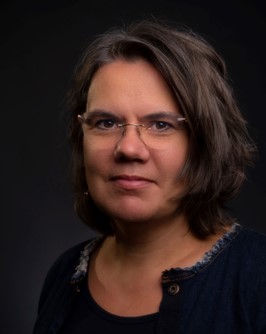"It is important not to remain stuck in old habits, but to be willing to redesign product, packaging and business model."
Inge Oskam has been a lecturer at the Hogeschool van Amsterdam (HvA) since 2007 and has led the lectureship Circular Design & Business since 2015. Oskam conducts practice-oriented research at the intersection of design, technology and business. In doing so, she focuses on the transition to a circular economy
In this interview, she shares her insights and inspiration on making packaging sustainable and the importance of system change.
What is the link between your work and Packalicious?
"To me, Packalicious is a place where research and practice really come together with an eye on the future. Frontrunners work together here. Through the combination of research, education and practice, we have insight into issues from practice and learn where additional research is needed. From ongoing research, we share valuable knowledge that is applied in practice."
 Inge Oskam, lecturar Hogeschool van Amsterdam
Inge Oskam, lecturar Hogeschool van Amsterdam
Can you tell us something about the Rethinking Packaging Systems research project and how it contributes to making packaging more sustainable?
"The Rethink method evolved from previous research, such as the Goed Verpakt project, which focused on the agri/food sector. What is special about Rethink is that we don't just look at the packaging itself, but also at the product and the business model behind it. We examine what need the product-packaging combination and business model fulfils. By reanalysing and adapting that combination, we arrive at circular solutions that go beyond improving existing packaging. Think, for example, of reusable packaging or refillable packaging systems. This approach is valuable not only for the food sector, but also for other sectors such as horticulture and cosmetics, where we already see a lot of demand for circular solutions. This is why we are collaborating with these sectors in the Rethinking Packaging Systems project."
What are the main challenges in making packaging more sustainable?
"In floriculture, for example cut flowers, we often encounter packaging that is added and removed again and again, leading to a lot of loss of value. In the cosmetics industry, we see a similar challenge: a lot of extra packaging is used, especially in Internet sales. Stricter regulations are coming soon, which restrict the carrying of ‘air’ in packaging. It is a complex issue because many different parties are involved, from the manufacturer to the retailer. Therefore, it is essential to analyse the chain as a whole and work together to find sustainable solutions."
How can the Rethink approach help companies develop sustainable packaging solutions?
"The Rethink approach helps companies think out of the box. It is important not to get stuck in old habits, but to be willing to redesign product, packaging and business model. By analysing the total chain and looking at the functions packaging fulfils, we can arrive at circular solutions that keep materials in use for much longer. The ultimate goal is a system change: we should not only look at material innovations or recyclability, but also at when and whether packaging is really needed. By addressing this process, we can make both economic and environmental gains."
What is the long-term vision for circular packaging?
"The long-term vision is that companies themselves have the tools to develop circular packaging solutions. In the Rethinking Packaging Systems project, we are working on an online tool that allows companies in different sectors to implement the Rethink approach themselves. This will enable them to find intrinsically sustainable packaging solutions that fit their specific situation. Ultimately, we want to create a system where companies not only have the necessary knowledge, but also the motivation and tools to make a difference."
What can companies already do to make their packaging more sustainable?
"Companies can already get started by thinking about the functions that packaging performs and where improvements can be made. This starts by taking a critical look at the chain and reconsidering existing choices. Check out the tool we developed: https://www.circonnect.org/kennisbijdrage/hva-rethink-tool/."
Thanks Inge, for your valuable insights and inspiring vision on the future of sustainable packaging!